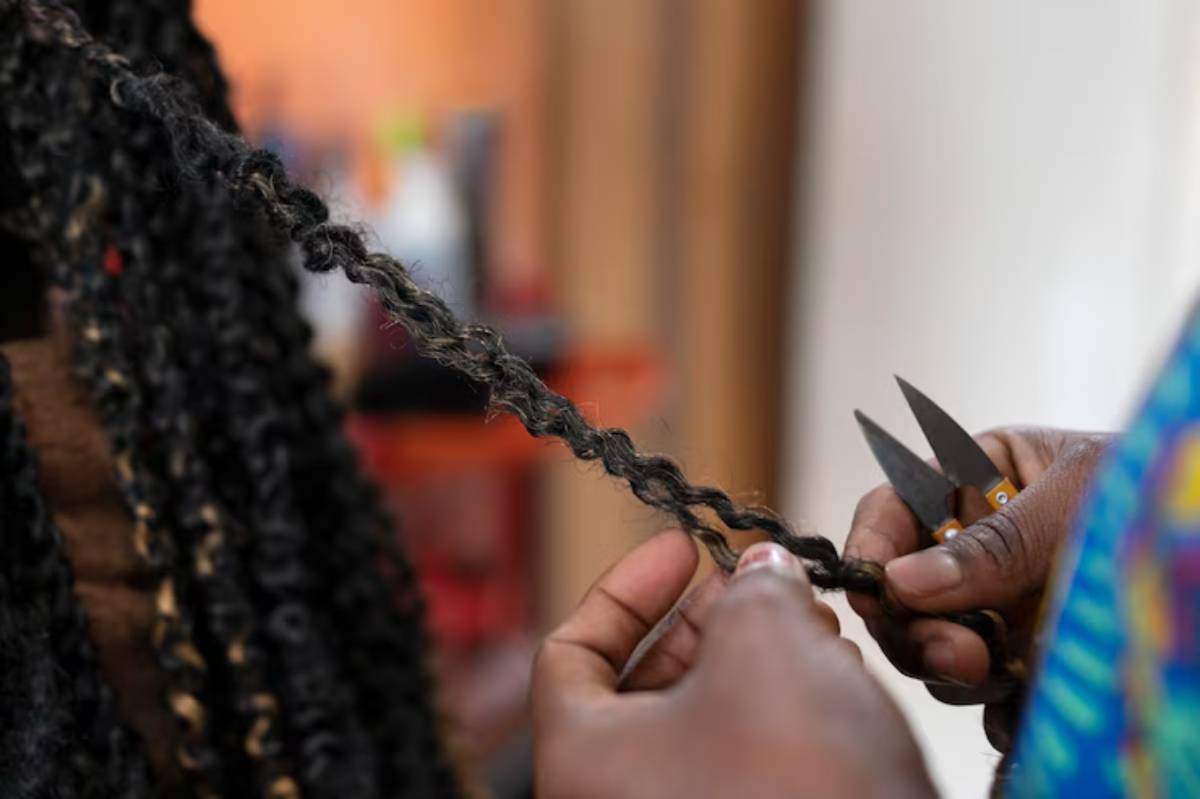
Twist-Outs, Braid-Outs, and Wash-n-Gos Explained
Natural hair is stunning in its versatility. Whether you’re rocking Type 2 waves or tightly coiled Type 4 strands, one of the best parts of having curly hair is the styling freedom that comes with it. Among the most beloved and reliable styles are three pillars of curly hair care: the twist-out, the braid-out, and the wash-n-go.
These styles do more than just look good — they help define your curl pattern, retain moisture, protect your ends, and even reduce manipulation. But if you’ve ever stood in front of the mirror wondering which one to try (or why your twist-out flopped after just one night), you’re not alone.
In this guide, we’ll break down the differences between these techniques, what each one offers, how they suit different hair types, and how to make them last. Whether you’re after volume, elongation, definition, or all of the above, you’ll find your ideal style by the end of this post.
What Is a Twist-Out?

Definition and Purpose
A twist-out involves dividing damp or stretched hair into sections, twisting two strands together, letting them dry completely, and then unravelling them to reveal a defined, stretched curl pattern.
It’s one of the most popular styles among naturals because it:
- Enhances definition
- Helps stretch shrink-prone curls
- Creates soft, manageable volume
- Works on all curl types
Ideal For:
- Type 3B to 4C curls
- Medium to high-density hair
- Anyone seeking a soft, fluffy finish
What Makes It Special?
Twist-outs are versatile. You can adjust the twist size for different results — larger twists create more volume and less definition, while smaller twists yield tighter, more defined curls.
They’re also great for transitioning hair, as the twisting motion helps blend straight ends with natural roots for a cohesive look.
What Is a Braid-Out?

Definition and Benefits
Similar to a twist-out, a braid-out involves creating three-strand braids on damp or stretched hair, allowing them to dry, and then unravelling to reveal a defined wave or curl.
Braid-outs often offer:
- Greater stretch than twist-outs
- More defined wave patterns
- Longer-lasting results in humid weather
- Better root control for those with thick or dense hair
Ideal For:
- Type 3A to 4B
- High-porosity curls need more structure
- People looking for more elongation or longer-lasting styles
Want a more detailed breakdown of prep and products that support these styles? Learn how to build a simple curly hair regimen for consistent hydration and definition.
What Is a Wash-n-Go?

Definition and Common Misconceptions
A wash-n-go is exactly what it sounds like — a style that enhances your natural curl pattern with minimal manipulation after washing. But despite the name, it’s far from just “wash and leave.”
Typically, a wash-n-go involves:
- Cleansing and conditioning the hair
- Applying curl-defining products (e.g., gel, mousse, or curl cream)
- Styling while wet (raking, praying hands, scrunching)
- Air drying or diffusing to set the curl pattern
Ideal For:
- Type 2C to 4A curls with strong definition
- Curls who want to embrace their natural pattern
- Anyone looking for low-maintenance styling without daily manipulation
Why It Works
Wash-n-gos are ideal for celebrating your true texture. They often deliver more shrinkage than twist- or braid-outs, but offer incredible bounce, shine, and authenticity.
How Do These Styles Compare?
| Feature | Twist-Out | Braid-Out | Wash-n-Go |
|---|---|---|---|
| Curl Definition | Medium to high | High with a wave-like pattern | High (depends on product/method) |
| Stretch/Elongation | Moderate | Stronger elongation | Least (max shrinkage) |
| Ease of Styling | Easy once practiced | Slightly more effort | Quickest once mastered |
| Hold & Longevity | 3–5 days (longer with re-twisting) | 4–7 days | 2–4 days, depending on technique |
| Volume | Fluffy — can be picked for lift | More root control, structured shape | Natural volume varies by hair type |
| Best Use Case | Day-to-day wear, medium styling time | Longer wear, stretched styles | Minimal time, natural curl showcase |
Key Factors That Impact Style Results
Hair Porosity
- Low-porosity hair benefits from lighter products and longer drying time, making wash-n-gos tricky without diffusing
- High-porosity hair absorbs moisture quickly but loses it just as fast. Styles like braid-outs help retain shape and moisture longer
Density & Thickness
- Thicker or high-density hair responds better to braid-outs for uniform structure
- Fine hair may find twist-outs offer more controlled volume
Curl Pattern
- Looser curls (2C–3A) often get best results with wash-n-gos
- Tighter coils (3C–4C) may favour twist- or braid-outs to elongate and define
Styling Maintenance Tips for Each Method
Twist-Out Care
- Re-twist nightly or use the pineapple method
- Sleep on satin pillowcases or use a bonnet
- Use a light mist in the morning and fluff with fingers or a pick
Braid-Out Maintenance
- Large braids at night help retain the wave pattern
- Apply a small amount of oil to reduce frizz during take-down
- Avoid over-manipulation to preserve the stretch
Wash-n-Go Preservation
- Refresh with water and leave-in every other day
- Sleep in a pineapple or with a satin scarf
- Scrunch in a bit of gel or cream for definition revival
If you’re incorporating styling into your wash day, consider using one of the best leave-in conditioners for curly hair to enhance hold and moisture from the start.
Common Mistakes to Avoid
- Unravelling twists or braids too early — always ensure your hair is fully dry before separating, or frizz will take over
- Using the wrong product for your curl type — too much hold can leave curls stiff, too little won’t define
- Skipping prep work — no style holds on dry, product-starved hair. Always prep with leave-in and sealants
- Over-manipulating once styled — touch less, fluff gently, and avoid re-separating defined sections
Conclusion: Choose the Style That Works for You
Whether you’re team twist, braid, or wash-and-go, the real winner is the one that suits your lifestyle, hair goals, and personal comfort. Each technique offers its own set of perks — from long-lasting hold to effortless authenticity. The key is understanding your hair and making informed choices based on your unique pattern, porosity, and routine.
So don’t be afraid to experiment. Try a twist-out this week, a wash-n-go next, and a braid-out for that special event. Your curls are a canvas, and you hold the brush.


